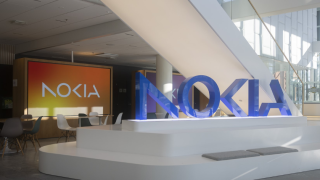Two major research projects have been announced, one concerning AI-driven cognitive networks with MIT Materials Research Laboratory, and another on zero energy devices that can be powered "possibly directly via a radio signal", in collaboration with MIT Research Laboratory of Electronics (RLE).
The aim is to help build a new network infrastructure that can support the use cases the next generation of mobile networks will bring.
"As energy-efficient connected devices take the next leap forward, we are thrilled to be collaborating with Ericsson to tackle the key technical challenges," said Anantha P. Chandrakasan, Dean of MIT's School of Engineering.
"By combining our knowledge with Ericsson's expertise in mobile technology, we aim to develop hardware that will power exciting new AI applications on the edge, and take significant strides in the next generation of mobile networks."
Ericsson is researching cognitive networks, which rely on artificial intelligence (AI) that will, as networks become more complex to operate and maintain, enable a secure, highly automised, data-driven network operation.
To improve the compute power, speed and energy efficiency of cognitive networks, Ericsson Research and the MIT Materials Research Laboratory are collaborating to research new designs in lithionic chips enabling neuromorphic computing, which they said offers "exponentially more energy efficient AI processing".
This could enable fully cognitive networks with reduced operation complexity and energy consumption compared to today.
Neuromorphic computing, a capability that Intel and others are also looking at, is essentially AI 3.0. First generation AI was rules-based whereas second generation is focused on perception and sensing. The next evolution will see AI that can interpret and address situations, as the human brain does.
In addition to research on lithionics, Ericsson and the MIT Research Laboratory of Electronics (RLE) are collaborating on research of mobile networks that connect trillions of sensors and other "zero-energy" devices. Powering these devices in a cost-efficient way, possibly directly via a radio signal, is a "significant technology challenge", according to the two.
The research they are planning may show how devices can harvest energy from radio signals and other sources, as well as how systems can be designed to utilise this low power to accomplish simple tasks, including how a mobile network may be designed to connect and control these devices.
"5G is leading to a fully-realized IoT and bringing us closer to a truly connected world," said Magnus Frodigh, head of Ericsson Research.
"Massive amounts of tiny IoT devices and AI-driven, cognitive networks are two drivers of the next leap forward. Working with the brilliant teams at MIT, we hope to develop the hardware that will make that possible."
The exploration of radio waves to carry energy, comes a decade after Professor Harald Haas coined the term Li-Fi, a method by which light can transmit data signals. Haas, who co-founded pureLiFi along with Dr Mostafa Afgani, found a way for visible light waves to be used to deliver data instead of radio waves.
The technology has been trialled with O2, during which LED light bulbs were used to provide high-speed wireless connectivity in a network deployed by O2 at their slough headquarters in the UK.





